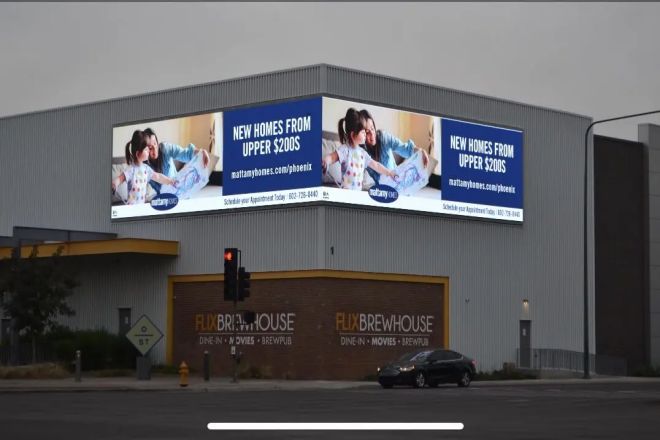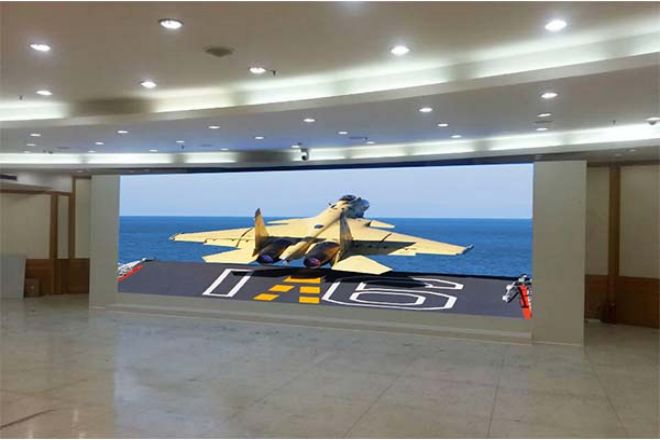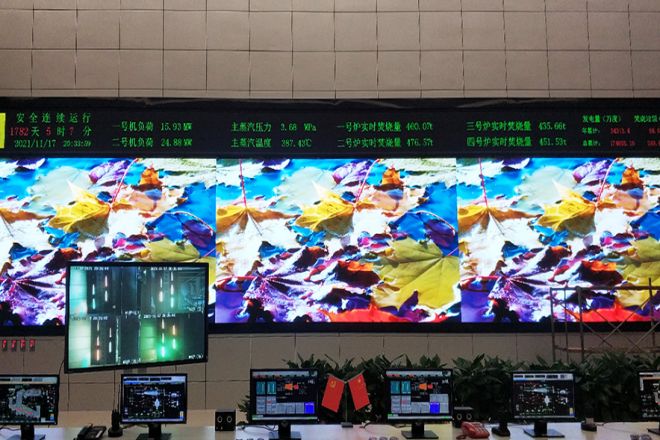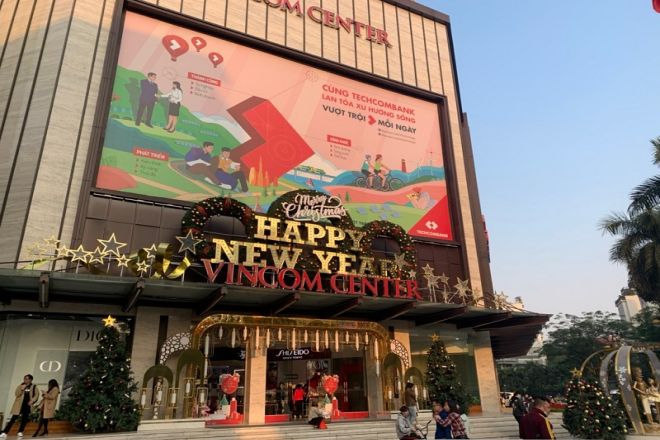Introduction

Entering a new era of digital vision, LED displays are not only a dazzling embellishment of the city skyline but also an infinite stage for creativity and information. Have you ever stopped in front of a large LED screen on a busy street and been attracted by the flowing pictures and stunning visual effects? But have you ever thought that this is just the tip of the iceberg of the potential of LED displays?
This article will take you to explore the infinite possibilities of LED displays in-depth, not only revealing the technical secrets behind them but also showing a series of impressive application cases, allowing you to witness with your own eyes how LED crosses boundaries and reshapes our visual experience.
More importantly, we will provide you with a set of practical strategies to help you make full use of LED displays in different scenarios; whether it is commercial promotion, artistic creation, or education and training, you can find the best display solution.
1. What are the benefits of making full use of LED displays?
Making full use of LED displays has many benefits, which are reflected in display effects, economy, environmental protection, practicality, and a wide range of application scenarios. The following is a detailed summary of these benefits:
1). Excellent display effect
High brightness and visibility: LED display screens can provide good visibility and clarity under various lighting conditions, including direct sunlight, to ensure effective communication of information.
Rich and realistic colors: Using high-brightness patches, the colors are realistic and soft, which can present vivid and rich images and video content, enhancing the audience’s visual experience.
High dynamic contrast: LED display screens can provide high contrast, making the details of images and videos clearer and more layered.
2). Economic and energy-saving
Long life: Compared with other forms of outdoor advertising, LED display screens have a longer lifespan under the same working environment and duration, which can reach tens of thousands to hundreds of thousands of hours, reducing replacement costs.
Energy saving: LED display screens have low power and are more energy-efficient than traditional display technologies, which helps to reduce energy consumption and operating costs.
3). Environmental protection
Green and environmentally friendly materials: LED display screens are made of environmentally friendly materials, which can be recycled and reused, and will not pollute the environment.
Low heat generation: Efficient heat dissipation treatment and low-power electronic components make the LED display screen generate less heat when working for a long time, reducing safety hazards such as fire.
4). Practicality and flexibility
Easy installation: LED display screens are light and convenient, and the installation process is relatively simple, which reduces the difficulty and cost of installation.
Strong customization: Various sizes and shapes can be customized as needed to adapt to different installation environments and requirements and meet diverse display needs.
Wide application: LED display screens are widely used in advertising, information display, live broadcast and other fields due to their excellent performance and flexibility, and have become a very popular and practical display solution.
5). Rich application scenarios
Product promotion and customer attraction: Merchants use LED display screens to promote products, which can attract customers’ attention and improve sales results.
Store decoration and grade improvement: The diversity and innovation of LED display screens provide more possibilities for store decoration, which helps to improve the overall image and grade of the enterprise.
Announcements and information release: LED display screens can be used as bulletin boards to publish promotional information, recruitment information, etc., and provide timely and accurate information services to the public.
Lighting and innovation: The brightness and color performance of LED display screens make them unique lighting and decorative elements, which help to create a unique atmosphere and visual effects.
2. Steps to check whether the LED display screen is fully utilized

In the process of checking whether the LED display screen is fully utilized, the steps you listed are very comprehensive and critical. The following is a detailed analysis of these steps for better execution:
1). Evaluate current usage
Purpose: Understand the current utilization of the LED display screen, including usage scenarios, purposes, and daily operations.
List all usage scenarios and purposes: Record in detail the occasions where the LED display screen is used (such as outdoor advertising, shopping mall promotions, event live broadcasts, etc.) and the specific purposes of each scenario (such as brand promotion, information transmission, atmosphere creation, etc.).
Analyze the frequency, duration, and content updates: Count the usage time of the display screen every day or week to observe whether it is fully utilized. At the same time, check the frequency and timeliness of content updates to ensure the freshness and timeliness of information.
2). Review content and effect
Purpose: Evaluate the quality and effect of the display content, as well as the audience’s acceptance and response to the content.
Evaluate the attractiveness, creativity, and information transmission efficiency of the display content: Analyze whether the display content is novel, interesting, and creative and whether it can effectively convey information. Check whether the layout, color matching, and dynamic effects of the content are attractive.
Observe audience reactions: Understand audience attention, satisfaction and interaction with LED display screens through on-site observation, questionnaires or social media feedback. Evaluate the actual effect of the display screen in attracting attention, enhancing brand awareness and promoting sales.
3). Technical performance inspection
Purpose: Ensure that the technical performance of the LED display screen reaches the best state and meets the use requirements.
Check key technical indicators: Measure and record key technical indicators such as resolution, brightness, color saturation of the display screen, and compare and analyze with industry standards or user needs. Ensure that these indicators can meet the needs of the application scenario.
Evaluate the control system: Test the stability, ease of use and functionality of the control system. Check whether there are problems such as inconvenient operation, functional limitations or frequent failures, and optimize or upgrade them in time.
4). Cost-benefit analysis
Purpose: Evaluate the return on investment of the LED display screen and whether there is room for further cost reduction and efficiency improvement.
Calculate the return on investment: Compare and analyze the direct costs of purchasing, installing, and maintaining the LED display screen with the indirect benefits it brings (such as increased brand exposure and sales growth). Calculate the return on investment (ROI) to evaluate the economic benefits of the display screen.
Analyze cost savings and efficiency improvement space: Explore whether there are optimization measures to reduce energy consumption, reduce maintenance costs, and improve content update efficiency. Further, the utilization efficiency and economic benefits of LED display screens can be improved through technological innovation and management improvement.
3. How to make full use of your LED display screen
To make full use of LED display screens, the following strategies can help achieve this goal:
1). Content innovation and optimization
High quality and creativity:
Content is the core of attracting audiences. The importance of high-quality and creative content should be emphasized to ensure that the displayed content is not only accurate in information but also visually attractive. Update the content regularly to keep it fresh and avoid visual fatigue in the audience.
Data analysis:
Data analysis tools are used to collect audience behavior data to understand their preferences and interests. Customize content based on this data to make it closer to audience needs, thereby enhancing its appeal.
2). Technology upgrade and integration
- Pay attention to technological progress:
Pay close attention to the latest developments in LED display technology, including higher resolution, wider color gamut, smarter control systems, etc. Upgrade and replace in a timely manner to ensure that the technical level of the display screen is at the forefront of the industry.
- Integrate other technologies:
Explore the possibility of combining LED display screens with other advanced technologies (such as AR/VR and the Internet of Things). For example, AR technology can be used to enhance the interactivity and immersion of display screens。
Remote monitoring and intelligent management of display screens can be achieved through IoT technology to improve operational efficiency.
4). Scenario expansion and innovative applications
- Explore application potential:
The application scenarios of LED display screens are far more than those of commercial advertisements. We should actively explore its application potential in more scenarios, such as large-scale outdoor events, sports events, public art exhibitions, virtual reality experiences, etc.
Through innovative applications, the scope of use and influence of display screens can be broadened.
- Cross-border cooperation:
Encourage cross-border cooperation and combine LED display screens with other industries (such as culture, tourism, education, etc.) to jointly create new business models and value points.
Through cross-border cooperation, resources can be shared, advantages can be complementary, and the prosperity and development of the display screen market can be jointly promoted.
5). User participation and interaction
- Design interactive links:
Design interactive links on the display screen to display content, such as questions and answers, voting, games, etc., to encourage audience participation. Through interaction, the audience’s sense of participation and immersion is enhanced so that they are more engaged and enjoy the viewing process.
- Use social media:
Use social media and other platforms to expand the influence of display screens. Attract more people to pay attention and participate by publishing relevant topics and holding online activities.
At the same time, viewers can be invited to share their viewing experience and feelings on social media to form an online and offline linkage communication effect.
4. Case analysis of making full use of LED display screens
Case analysis of making full use of LED display screens can show its successful factors and reference points in practical applications from multiple angles. The following are several representative cases for analysis:

1). China Datang Guoyuan Mining Dispatching Command Center
In China Datang Guoyuan Mining Dispatching Command Center, an indoor P1.25 curved LED large screen with an area of 21.6 square meters is used. The display integrates multiple functions, such as coal mine disaster supervision, analysis, and service.
It can display the latest operation status of the underground coal mine site in real-time and issue early warnings in time to ensure the safe and efficient production of mine operations.
Success factors and reference points:
Customized solution: According to the actual needs of the mining dispatching command center, a curved LED large screen is tailored to improve the pertinence and practicality of information display.
High-definition display effect: The small spacing design of P1.25 ensures the high-definition and delicate display screen, which helps decision makers quickly capture key information.
Integrated functions: It integrates multiple functions into one, which not only improves work efficiency, but also reduces equipment redundancy and reduces costs.

2). Vincom Shopping Center in Vietnam
Vincom Shopping Center in Vietnam installed an outdoor P10 LED large screen outside of the shopping mall building, covering an area of 250 square meters.
The display screen is mainly used for brand promotion, advertising playback, and information transmission, and it has high protection levels such as lightning protection, anti-static, moisture-proof, and anti-corrosion.
Success factors and reference points:
High protection level: In view of the complex and changeable characteristics of the outdoor environment, a high protection level display screen is adopted to ensure long-term stable operation.
Large size and high brightness: The large size of 250 square meters and the specifications of P10 ensure that the advertising content can still be clearly displayed at a long distance and under strong light conditions.
Diversified applications: Not only for advertising but also for playing news, weather forecasts, and other information, enriching the information service functions of the shopping center.
Conclusion
With the continuous advancement of science and technology and the increasing diversification of people’s needs, the application prospects of LED display screens will be broader.
From commercial advertising to artistic creation, from smart cities to distance education, LED displays are leading the new trend of digital visual display with their unique charm and unlimited possibilities.
Finally, if you want to know more about LED displays, please get in touch with us.
